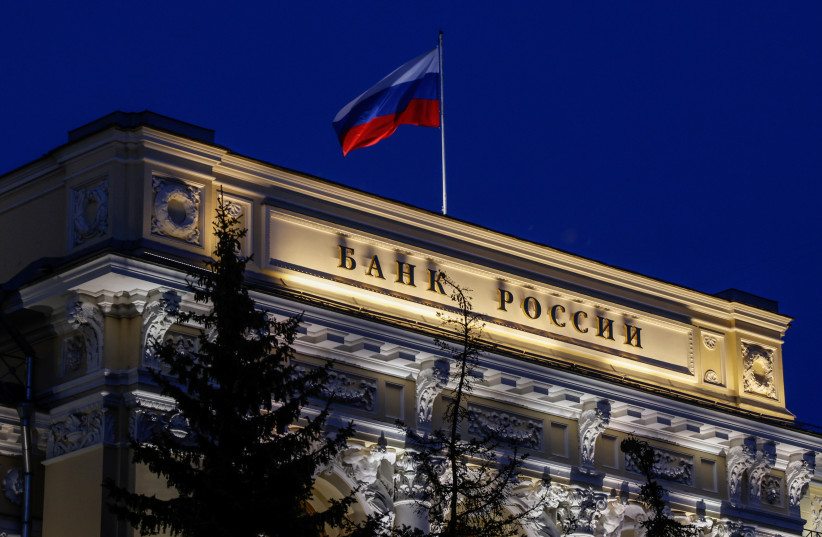A Visit to Moscow is a slim volume of barely 70 pages and can be read in one sitting. Beautifully illustrated, it is based on a true story told to Anna Olswanger by Rabbi Rafael Grossman. Olswanger chose the unique form of a graphic novel to tell the story.
A graphic novel is a book in which the illustrations move the story along just as much as the text itself. It is similar to what most of us know as comics, the difference being that comics are generally thought of as weekly or monthly publications for children, while the graphic novel tells a serious story to a mature reader. In A Visit to Moscow, Yevgenia Nayberg’s drawings create a striking backdrop to Olswanger’s text. Her palette changes according to the story, adding to the effect of the words.
Rabbis go to meet Soviet Jewry
In 1965, Grossman was a member of a group of rabbis that flew to the USSR to meet with Jews living behind the Iron Curtain. They wanted to find out the truth of the rumors they had heard “that the Jews lived in fear of being reported to the KGB for public acts of Judaism. That they were watched. Followed. That some Jews were even arrested.”
The group stayed at the Metropol Hotel in Moscow. A tour was carefully arranged for them so that they would visit only the sites that the Soviets wanted them to see. As the group prepared to get on the tour bus for a visit to Red Square, Grossman claimed he had a headache and asked to stay in his room. When the other rabbis departed on the bus, he went outside to look for a taxi.
Grossman had a mission. A woman in New York named Bela Gurwitz had heard about the delegation of rabbis going to the Soviet Union and had contacted him. She had given him a letter she had received from her brother Meyer. The letter was a decade old, the last one she had received from him, and she had not heard from Meyer since. She asked Rabbi Grossman to find her brother to see how he was and make sure he was okay.
Grossman found a taxi, and the driver took him to the address on the letter. He found Meyer, who at first did not trust him and was afraid to talk to him. When Meyer finally allowed the rabbi into his apartment, what he found is what makes the story so unique and unforgettable. Meyer and his wife had a young son, Zev, who had never been outside of the room where he was born.
Grossman was in shock. “But why?” he asked.
Meyer looked at him and spoke. “Because we are Jews. Because Zev is a Jew and can remain a Jew only as long as he remains in this room... No one calls Zev “zhid” (Jew). No one yanks his yarmulke from his head. No one teaches him arithmetic and the Russian language on the Jewish Sabbath or feeds him milk with meat from a state school lunch. No one laughs at him because he prays to God.”
When Grossman left the family to return to his hotel, he told them he would find a way to help them leave the Soviet Union and get to Israel.
THIS EXPERIENCE made a lasting impression on Grossman. When he returned to the US, he shared the story with many people whenever he talked about his trip to the Soviet Union and the situation of the Jews who lived there.
Around that time, the movement to support the Jews of the Soviet Union was just beginning in the US. In an afterward in the book, Rabbi Aaron Rakeffet-Rothkoff notes, “In 1964, the Student Struggle for Soviet Jewry was launched in New York City. With the SSJ leading the way, groups all over America sprung up to aid and support Soviet Jewry’s rights and freedoms.”
The story of Rabbi Grossman’s visit to the USSR is framed by Zev’s story, which has a vague and otherworldly quality to it. Only when reading the notes at the end of the book did it become clear. I had to reread the book a few times in order to understand this part of the story, but rereading it only made me appreciate the beauty of the illustrations and the significance of the subject even more.
The book is short but packs a punch. I recommend it to school-age children and adults alike.
A VISIT TO MOSCOWAdapted by Anna Olswanger from book by Rabbi Rafael GrossmanIllustrated by Yevgenia NaybergWest Margin Press72 pages; $19.99

